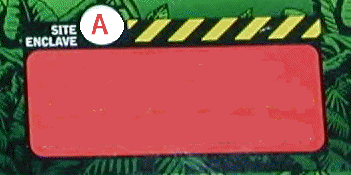LATE JURASSIC
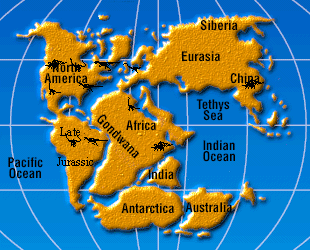
The Late Jurassic 159 - 144 million years ago the continents have seperated into the northern Laurasia and southern Gondwanaland.
Giants continue to develop in the Seas of the Jurassic. Liopleurodon was a giant of the Jurassic sea. Fish, sharks and ammonites continue to evolve. The first documented birds are found in Europe at Solenhofen along with other small dinosaur fauna. Pterodactyls start to replace the rhamphorrynids. At the the end of the Jurassic the continents have separated and new plants begin to join the conifers, ferns and cycads.
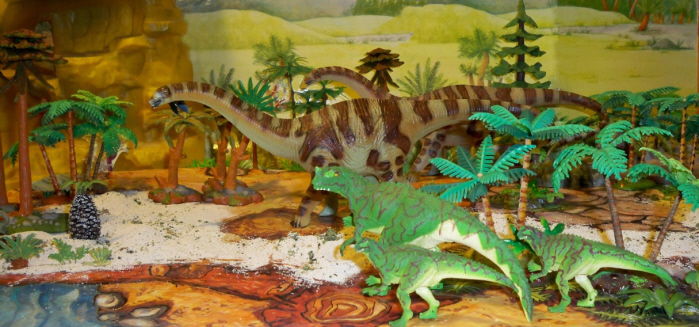
West Laurasian: - In this megafauna sauropods predominated, and were primarily of the diplodocid and camarasaurid families, with a few haplocanthosaurs and the occasional huge brachiosaur. Morrison dinosaurs exhibited a tendency to increase in size, possibly caused by increasingly harsh and arid conditions, so that by the mid Tithonian they were truly gigantic. Then they suddenly died out, leaving a number of small dinosaurs, mammals, and lower vertebrates to carry on.
Central Laurasia: Europe during the Jurassic seems to have consisted of a number of large islands separated by shallow sea. A number of different types of dinosaurs have been found in Portugal, Spain, England, and Germany. Sauropods include not only most "standard" Jurassic types but families totally indigenous to Europe during the Jurassic period. The first protobirds like Archaeopteryx inhabited the islands of Europe, no doubt benefiting from the isolation from large predators and tendency to evolutionary novelty that small islands provide.
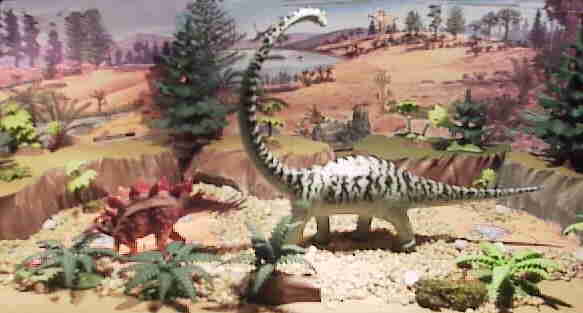 East Laurasia: Animals in China the Eastern part of the world-continent remained quite different to those of the west. Stegosaurs
were exceedingly diverse in China, and include both primitive and
advanced forms. They lived alongside basal (ancestral) marginocephalians, persistently primitive euhelopid sauropods and Triassic holdovers like tritylodontid therapsids and short-headed brachyopid
labyrinthodonts. Allosaurids are also known from the Late
Jurassic of China indicating that these carnivores were able to wander
widely over the Earth's surface (unlike the euhelopid sauropods which
are not known outside of China).
East Laurasia: Animals in China the Eastern part of the world-continent remained quite different to those of the west. Stegosaurs
were exceedingly diverse in China, and include both primitive and
advanced forms. They lived alongside basal (ancestral) marginocephalians, persistently primitive euhelopid sauropods and Triassic holdovers like tritylodontid therapsids and short-headed brachyopid
labyrinthodonts. Allosaurids are also known from the Late
Jurassic of China indicating that these carnivores were able to wander
widely over the Earth's surface (unlike the euhelopid sauropods which
are not known outside of China).
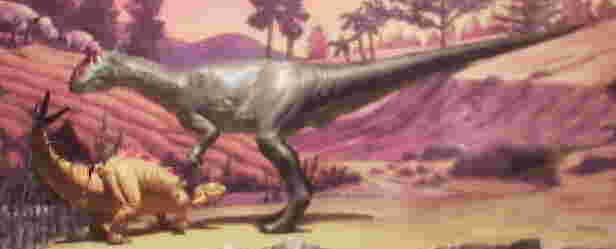
West Gondwanaland. West Gondwanaland had the Tendaguru fauna that was very similar to that of North America, with many types of dinosaurs in common. But the Laurasian Camarasaurus is absent, and Brachiosaurus, which is rare in North America (West Laurasia), is the most common sauropod in the Tendaguru formation (West Gondwana). However, it appears to be a distinct genus Giraffititan from the West Laurasian form. The small stegosaur Kentrosaurus closely resembles primitive European and Chinese forms, but is quite unlike the large and advanced American Stegosaurus. There were also several types of dinosaurs that were Gondwanan endemics as well. Of significance were Dicraeosaurus a small short-necked persistently primitive diplodocoid sauropod.
East Gondwana: Labyrinthodonts must have lived in East Gondwanaland Australia and Antartica as well, because they are known there from both the Early Jurassic and the middle Cretaceous. Allosaurids are also known.
Next to the Early Cretaceous
